Overuse
Although overuse injuries are common in sports enthusiasts at any age, this health problem in young athletes has only been recognized in recent years. Overuse injuries in active youths range from the well-known nonspecific “growing pains” to the permanent disability of a bone.
The major factor in the increased frequency of overuse injuries in young tennis players is a health problem largely caused by sports specialization. Most young athletes develop injuries as a result of not providing reasonable off-training periods.
Repetitive Impact
Microtrauma is caused by repetitive impact on an area such as the heel of the foot. It often results in chronic long-term discomfort. More and more young athletes are being treated for complaints of chronic pain. In many cases, this pain is caused by poor training techniques or by excessive training routines.
Repetitive trauma also can affect the knees and shins. Patellar tendinitis, or runner’s knee, has been diagnosed in many young tennis players who are not properly conditioned to play on hard courts. Shin splints, which involve the excessive imbalance between the foot motion and leg motion, also is accentuated on hard-court surfaces. Competitive youths experiencing knee pain should be evaluated by their family physician or internist to rule out arthritic concerns, circulatory problems, nutritional deficiencies as well as an orthopedic imbalance, which could become the cause of future complaints.
Muscle-Tendon Imbalance
In other cases, pain and injuries are caused by a muscle-tendon imbalance. As young people’s bones grow, they affect the general function and flexibility of their joints. Consequently, stretching is very important to young athletes. Good stretching goals include lengthening shortened and tight muscles and strengthening the opposing muscles. These goals will help conquer muscle-tendon imbalance.
Structural Misalignment
Structural misalignment also may affect young athletes’ performances and subject them to injury. These misalignments can reveal themselves in various ways. One type is when one leg is longer than the other. Another type is an abnormal hip or knee, such as bow-legged or knock-kneed conditions, or excessive pronation or flattening of the feet.
In the case of flat feet, caused by overuse problems, young athletes may benefit from shoe inserts known as orthotics. Orthotics should be used only after other congenital imbalances are evaluated and either diagnosed or ruled out.
Occasionally young athletes may need a shoe lift to equalize the length of a shorter leg. There is no substitute for well-fitting tennis shoes. Look for a shoe with a contoured firm heel counter, strong heel, and flexible forefoot. Also, look for a rounded toe box, which will help give the young tennis player’s growing feet a proper position within the shoes and protect against stress. For more information about selecting tennis shoes, refer to my October 2005 TLM article “Selecting Shoes.”
Immature Bone Growth
A final factor in overuse injuries noted in young tennis players is the stress associated with immature bone growth. Heel pain complaints in young tennis players, aged 10 to 14, are often diagnosed as Sever’s disease, which is caused by the inflexibility of the Achilles tendon, calf muscle, and plantar fascia in the foot. Treatment of this condition includes heel padding, plaster cast immobilization, rest, orthotics, and anti-inflammatory medications. Once the bone has fully grown and the growth site is closed to form a solid bone, the childhood complaint is usually resolved. However, if this problem is not continually evaluated, adult symptoms (including heel pain, heel spur syndrome, plantar fasciitis, Achilles tendon concerns, and even kneecap pain) can occur in adulthood.
Prevention
To prevent overuse injuries in young athletes, I recommend a thorough physical assessment throughout childhood as well as throughout the athlete’s playing career. Also, to ensure a happy and healthy junior tennis player, pay proper attention to muscle flexibility, health status, playing surface and equipment.
Simon B. Small, DPM, FACFS, FAAPSM, is a board-certified Sports Medicine Specialist, Podiatrist and President of Pro-Support Systems, Inc.

